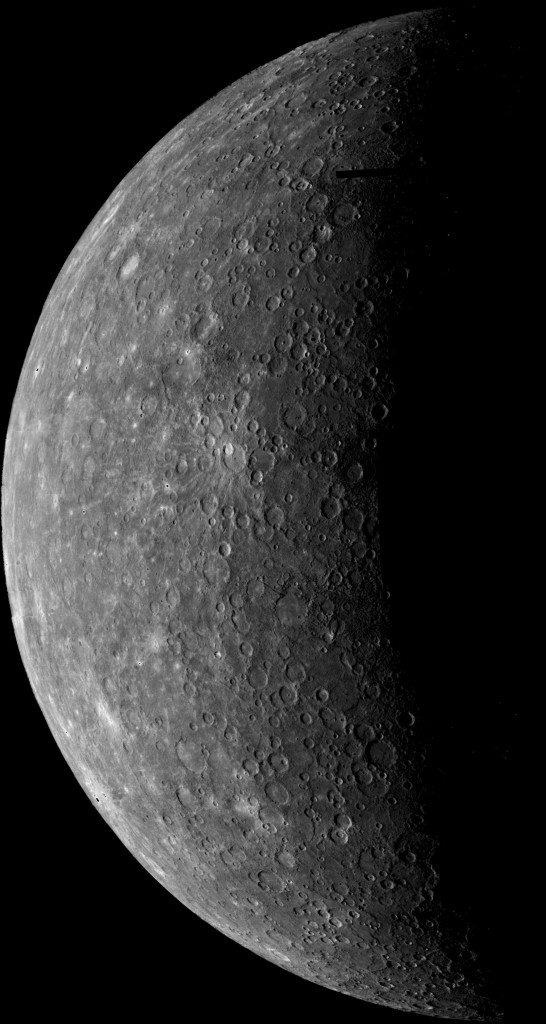Mercury

Image courtesy Nasa
Diameter: 4880 kilometers
Mass: 0.055 of Earth
Orbit around sun: 87.969 days
Surface Temperature: -193 degrees to 427 degrees Centigrade
Moons: 0
Mercury is a difficult object to view in the sky. Due to its close proximity to the Sun with regards to our own position, Mercury either preceeds or follows the Sun at the horizon and there is usually only a short period of time in which to view the planet. At the equator we have the greatest opportunity to view Mercury. When the conditions are right Mercury will be upto 28 degrees away from the Sun, which should allow about 2 hours of viewing after the Sun sets or rises.
The surface of Mercury is very similar to that of our Moon, due mainly to the very thin atmosphere. Any meteors that strike Mercury leaves an indefinite mark. Just as our moon shows hundreds of millions of years of meteor strikes so does Mercury. This really is an invaluable tool for astronomers to see how violent the early Solar System must have been.
| Mercury in other languages:- |
| Cebuano: | mercury |
| Chinese: | shuǐxīng 水星 |
| French: | mercure |
| German: | m merkur |
| Greek: | m Ερμής |
| Indonesian: | merkurius |
| Italian: | m mercurio |
| Japanese: | suisei 水星 |
| Nederlands: | c mercurius |
| Norwegian: | merkur |
| Polish: | m merkurz |
| Portuguese: | m mercúrio |
| Spanish: | m mercurio |
| Tagalog: | merkuryo |
| Turkish: | merkür |